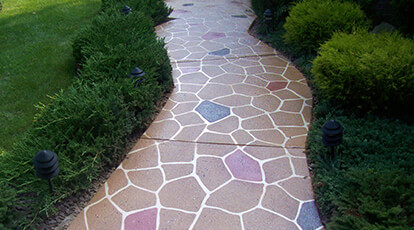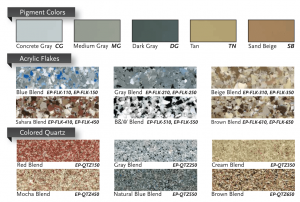We recommend all epoxies are applied with a squeegee in one direction and then back-rolled 90° to eliminate lines and to ensure an even coat.
Category: Products
What is the preferred method of application for Shield™ Epoxy?
Are custom color options available for Shield™ Epoxy?
Custom colors may be ordered. There is a 50 gallon minimum and a two week lead time required for processing.
How many colors are available for Shield™ Epoxy?
What is the coverage of Shield™ Epoxy?
The average coverage is 100-200 sq. ft. depending on substrate or desired texture. For example: coverage will be less over flake and quartz than it will be when going over pigmented epoxy.
Is Shield™ Epoxy UV stable?
No epoxies are UV stable and all must be used indoors. However, our UV Shield epoxy is extremely UV resistant and is a wonderful top coat for an epoxy floor, acid stain or interior countertop. UV shield may also be pigmented using one of our five standard pigment colors.
What is the proper mix ratio for Shield™ Epoxy?
All flooring epoxies are 2:1 A:B
How many people do you recommend be on a Shield™ Epoxy job?
Concrete Coatings, Inc., recommends 2-3 people for the first thousand square feet and one additional person for each additional thousand square feet.
What surface preparation is recommended for Shield™ Epoxy?
Shot-blasting or grinding is the preferred method of surface preparation for a concrete slab. Your substrate must have a profile to allow for proper adhesion and be free of any sealer, dirt, grime, oil, or residual adhesive.
May I use QuickDye™ when polishing concrete?
Concrete Coatings, Inc. recommends applying dye upon completion of your 400-grit pass. A second application of dye may be applied after the 800-grit pass to maintain and intensify color.
Does QuickDye™ require cleaning prior to the sealer application?
Cleaning is essential to ensure proper adhesion of sealers. We recommend the use of an auto-scrubber or white pad on a buffer to remove excess dye residue.

